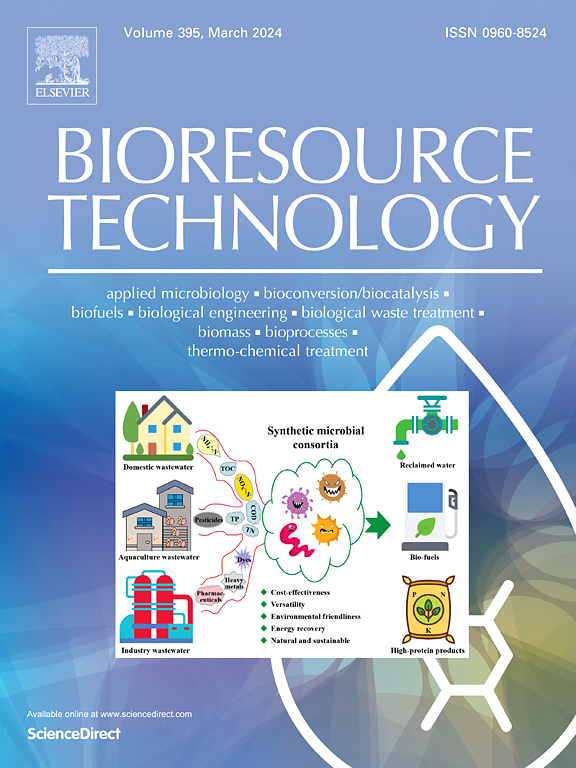Characterization and inhibition of hydrogen sulfide-producing bacteria from petroleum reservoirs subjected to alkali-surfactant-polymer flooding
IF 9.7
1区 环境科学与生态学
Q1 AGRICULTURAL ENGINEERING
引用次数: 0
Abstract
Alkali-surfactant-polymer (ASP) flooding is an emerging and promising oil recovery technique. However, the methods for preventing hydrogen sulfide-producing bacteria (SPB), main culprits to microbial souring, in such alkali reservoirs remains unknown. Here, four alkaline-tolerant SPB exhibiting versatile sulfur metabolism were identified. Representative strains DS3, DS5, DS8, and DS23 were associated with Sulfurospirillum alkalitolerans, Desulfonatronovibrio hydrogenovorans, Desulfobotulus sapovorans, and Desulfovibrio alkalitolerans, respectively. Pure culture experiments showed nitrite exerted partial inhibitory effects since DS3 preferred nitrite as an electron acceptor. And nitrate inhibition was feeble, as nitrate was dissimilated to ammonium by DS3 and DS5, and DS8 preferentially utilized sulfate compared with nitrate, and DS23 ignored nitrate respiration. Glutaraldehyde effectively prevented the production of H2S in pure culture and microcosmic simulation system, demonstrating its practical application potential in alkali reservoirs. This study enhances the understanding on physiological characteristics of SPB and bridges the gap in souring management in high alkaline ASP-flooded reservoirs.

碱-表面活性剂-聚合物驱油藏硫化氢产菌的表征及抑制作用
碱-表面活性剂-聚合物(ASP)驱油是一种新兴的、有前途的采油技术。然而,在这种碱性储层中,防止产生硫化氢细菌(SPB)的方法仍然未知,SPB是微生物酸化的罪魁祸首。在这里,鉴定了四种耐碱的SPB,它们表现出多种硫代谢。具有代表性的菌株DS3、DS5、DS8和DS23分别与耐碱硫螺旋菌、氢脱硫弧菌、皂脱硫弧菌和耐碱硫弧菌有亲缘关系。纯培养实验表明,由于DS3偏爱亚硝酸盐作为电子受体,亚硝酸盐具有部分抑制作用。硝态氮的抑制作用较弱,硝态氮被DS3和DS5异化为铵态氮,DS8优先利用硫酸盐而非硝态氮,DS23忽略硝态氮的呼吸作用。在纯培养和微观模拟体系中,戊二醛有效地抑制了H2S的生成,显示了其在碱性储层中的实际应用潜力。该研究增强了对SPB生理特性的认识,填补了高碱性asp淹水油藏酸化管理的空白。
本文章由计算机程序翻译,如有差异,请以英文原文为准。
求助全文
约1分钟内获得全文
求助全文
来源期刊

Bioresource Technology
工程技术-能源与燃料
CiteScore
20.80
自引率
19.30%
发文量
2013
审稿时长
12 days
期刊介绍:
Bioresource Technology publishes original articles, review articles, case studies, and short communications covering the fundamentals, applications, and management of bioresource technology. The journal seeks to advance and disseminate knowledge across various areas related to biomass, biological waste treatment, bioenergy, biotransformations, bioresource systems analysis, and associated conversion or production technologies.
Topics include:
• Biofuels: liquid and gaseous biofuels production, modeling and economics
• Bioprocesses and bioproducts: biocatalysis and fermentations
• Biomass and feedstocks utilization: bioconversion of agro-industrial residues
• Environmental protection: biological waste treatment
• Thermochemical conversion of biomass: combustion, pyrolysis, gasification, catalysis.
 求助内容:
求助内容: 应助结果提醒方式:
应助结果提醒方式:


